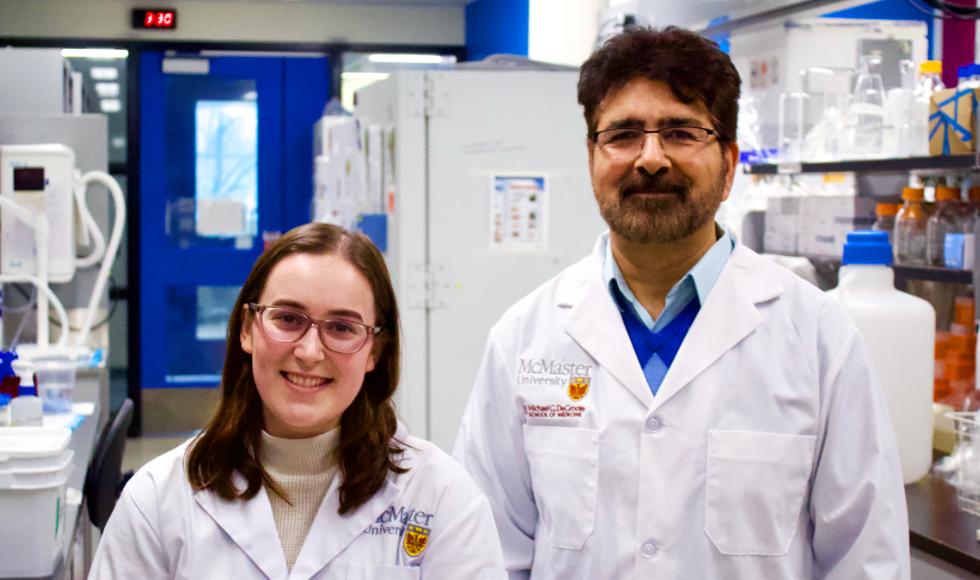For many years, it was thought that acute viral infections, such as COVID-19 or Zika, were the cause of neurological damage.
 McMaster University researchers Elizabeth Balint and Ali Ashkar, pictured here, have published new research that probed why some people suffer neurological damage from acute viral infections like Zika and COVID-19. Image Credit: McMaster University
McMaster University researchers Elizabeth Balint and Ali Ashkar, pictured here, have published new research that probed why some people suffer neurological damage from acute viral infections like Zika and COVID-19. Image Credit: McMaster University
However, McMaster University researchers have now found that the immune system’s reaction is actually to blame.
Elizabeth Balint, a PhD Candidate at McMaster, and Ali Ashkar, a Professor in the Department of Medicine and holder of the Canada Research Chair in Natural Immunity and NK Cell Function, led the study, which was published in Nature Communications.
We were interested in trying to understand why so many viral infections are associated with neurological diseases. Our evidence suggests that it’s not the virus itself that causes the damage, but a unique population of T cells which are part of the immune system, that are actually responsible for the damage.”
Elizabeth Balint, PhD Candidate, McMaster University
The McMaster team concentrated on the Zika virus in order to reach this conclusion. As anticipated, during laboratory testing, researchers discovered T cells specifically engineered to eradicate Zika-infected cells. The scientists also discovered something else.
What was interesting in our study is that although we did find some T cells specific for Zika, we identified cells that weren’t functioning like a normal T cell and were killing lots of cells that weren’t infected with Zika.”
Elizabeth Balint, PhD Candidate, McMaster University
Researchers claim that the aggressive response of these cells, known as NKG2D+CD8+ T cells, is to blame for neurological damage resulting from infections other than Zika, such as COVID-19 and even septic shock.
The body’s excessive production of inflammatory proteins known as cytokines, which in moderation aid in directing immune cells’ whereabouts and actions when they arrive in the body’s fight against infection or injury, is what causes the aggressive reaction.
If our body’s immune cells overreact and over produce inflammatory cytokines, this condition will lead to non-specific activation of our immune cells which in turn leads to collateral damage. This can have severe consequences if it happens in the brain.”
Ali Ashkar, Professor, Chair and Study Lead Author, Department of Medicine, McMaster University
Researchers and scientists now have a new target to treat neurological diseases caused by acute viral infections thanks to this discovery. Balint has actually already discovered a potentially effective treatment.
Ashkar says, “Elizabeth has experimented with an antibody that can completely block and treat devastating neurotoxicity in the animal model, which is already in clinical trials for different uses in humans.”
Balint intends to carry out research in the hopes of developing a human-useful treatment.
Balint says, “There are a few different other viruses we’re interested in studying, which will aid us in creating the best treatment options.”
Source:
Journal reference:
Balint, E., et.al. (2024) Bystander activated CD8+ T cells mediate neuropathology during viral infection via antigen-independent cytotoxicity. Nature Communications. doi.org/10.1038/s41467-023-44667-0